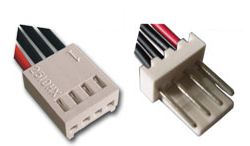Hi.
Several of the motors I am using on a build have the wiring harness connected internally within the motor, rather than a connector. This has some obvious drawbacks. For one you have fixed length to work with. And you get whatever wire they give you, rather than proper motion, or cable carrier rated wire.
Since this is a large corexy I don't think the wire leads will be long enough to reach the duet board which will be installed in a proper control box on the side of the machine.
What I would like to do is cut the factory leads off short leaving a pigtail. Install a connector. Then run my own shielded cable to the controller. (shield to be terminated at one end, probably to the frame near the motor).
I would prefer something more secure than Dupont connectors, and I am sort of lost when it comes to the numerous options options for various molex connectors.
I have also seen this done using a fancy Wago connector on an industrial CNC machine that I installed.
Anyway. I am curious if anyone has any input on some good solutions for this.
Thanks.
